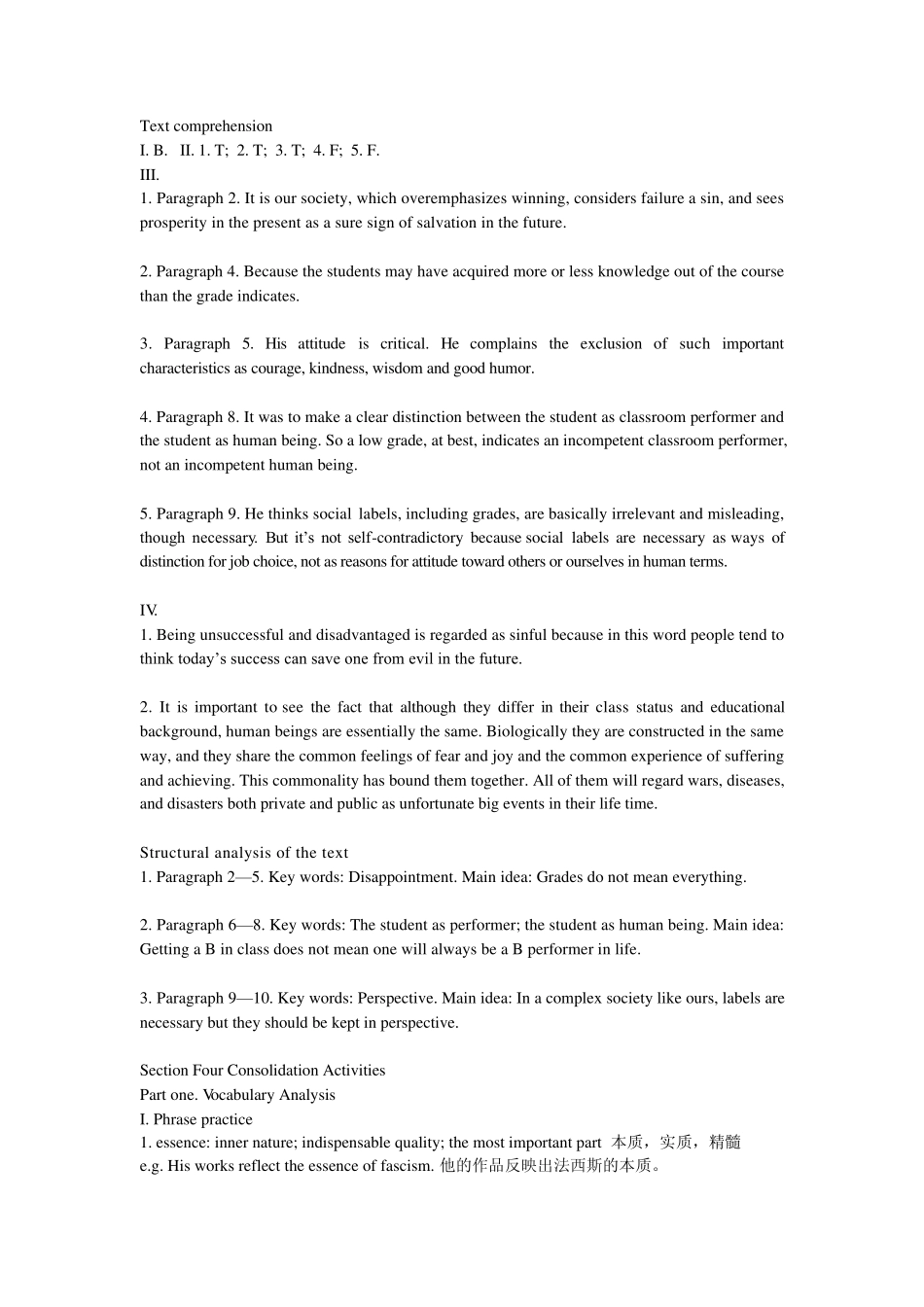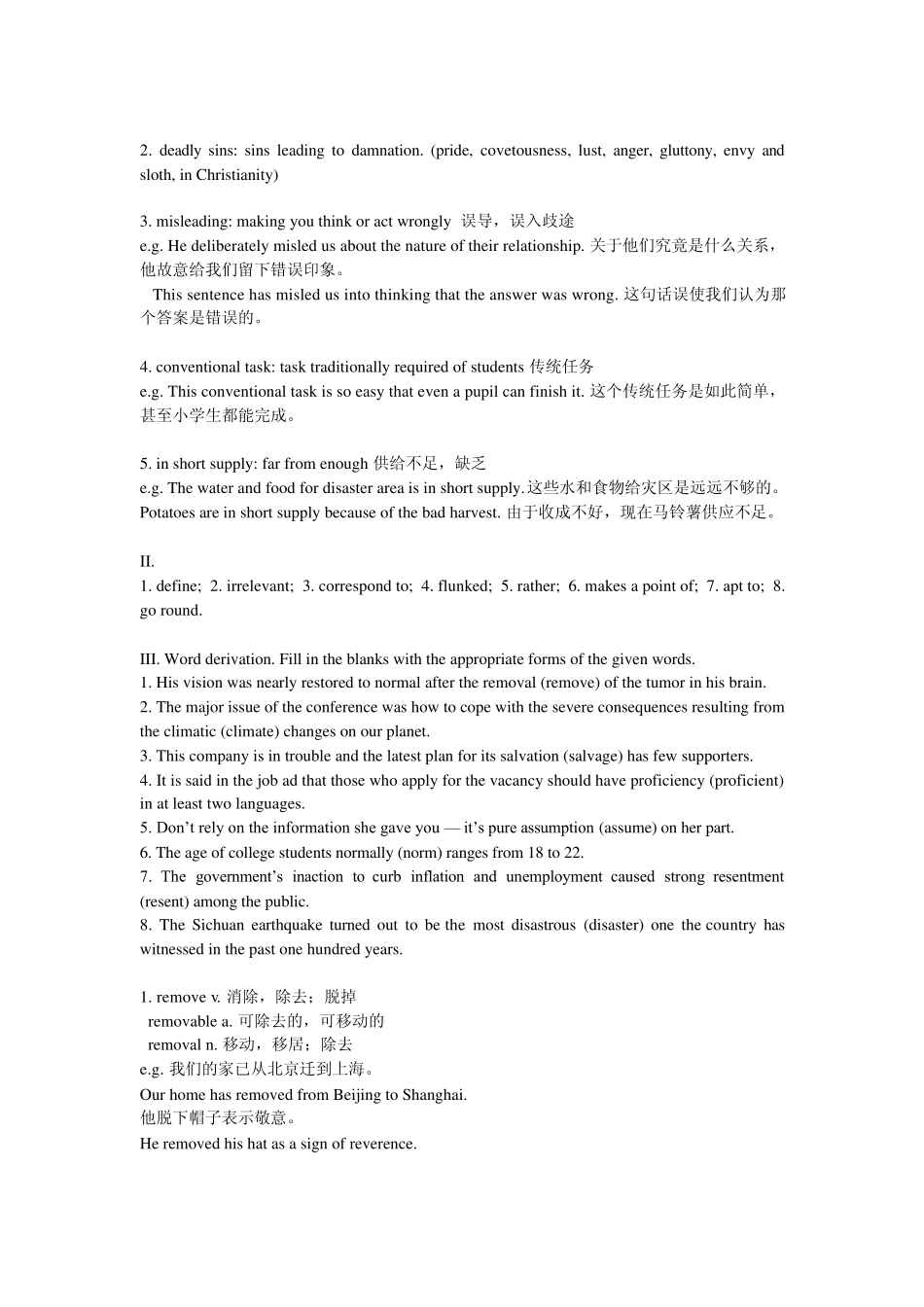Text comprehension I. B. II. 1. T; 2. T; 3. T; 4. F; 5. F. III. 1. Paragraph 2. It is our society, which overemphasizes winning, considers failure a sin, and sees prosperity in the present as a sure sign of salvation in the future. 2. Paragraph 4. Because the students may have acquired more or less knowledge out of the course than the grade indicates. 3. Paragraph 5. His attitude is critical. He complains the exclusion of such important characteristics as courage, kindness, wisdom and good humor. 4. Paragraph 8. It was to make a clear distinction between the student as classroom performer and the student as human being. So a low grade, at best, indicates an incompetent classroom performer, not an incompetent human being. 5. Paragraph 9. He thinks social labels, including grades, are basically irrelevant and misleading, though necessary. But it’s not self-contradictory because social labels are necessary as ways of distinction for job choice, not as reasons for attitude toward others or ourselves in human terms. IV. 1. Being unsuccessful and disadvantaged is regarded as sinful because in this word people tend to think today’s success can save one from evil in the future. 2. It is important to see the fact that although they differ in their class status and educational background, human beings are essentially the same. Biologically they are constructed in the same way, and they share the common feelings of fear and joy and the common experience of suffering and achieving. This commonality has bound them together. All of them will regard wars, diseases, and disasters both private and public as unfortunate big events in their life time. Structural analysis of the text 1. Paragraph 2— 5...


